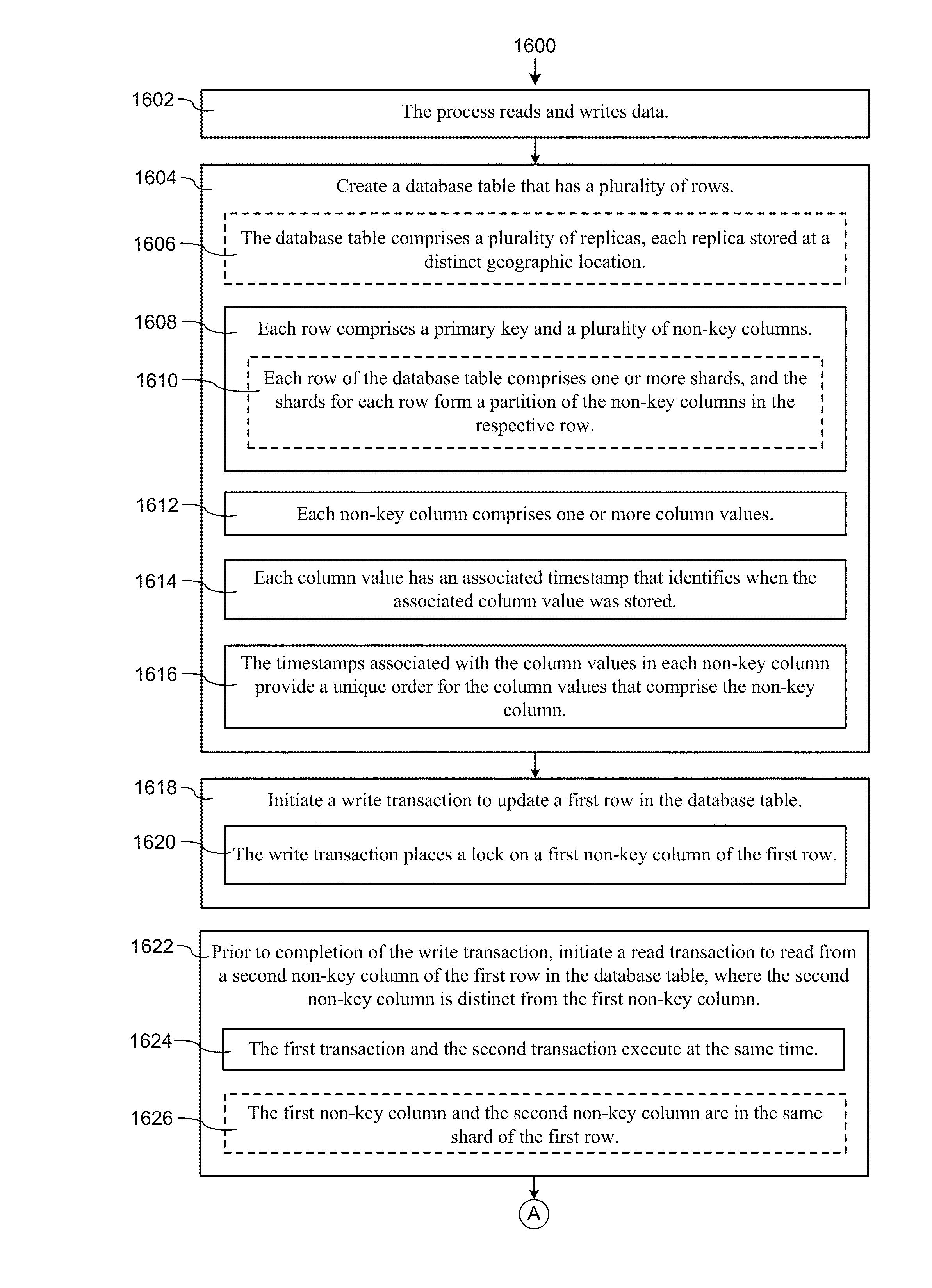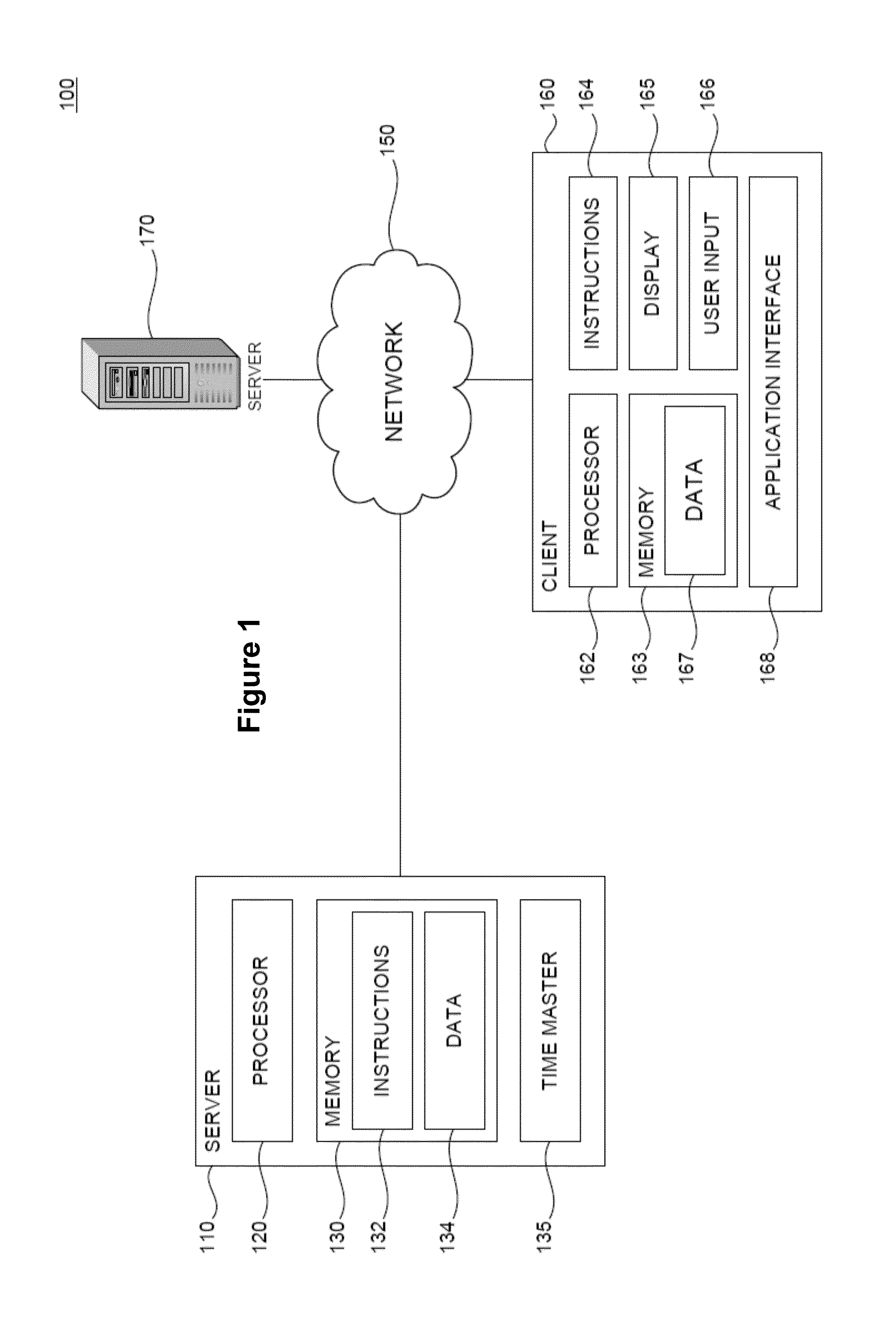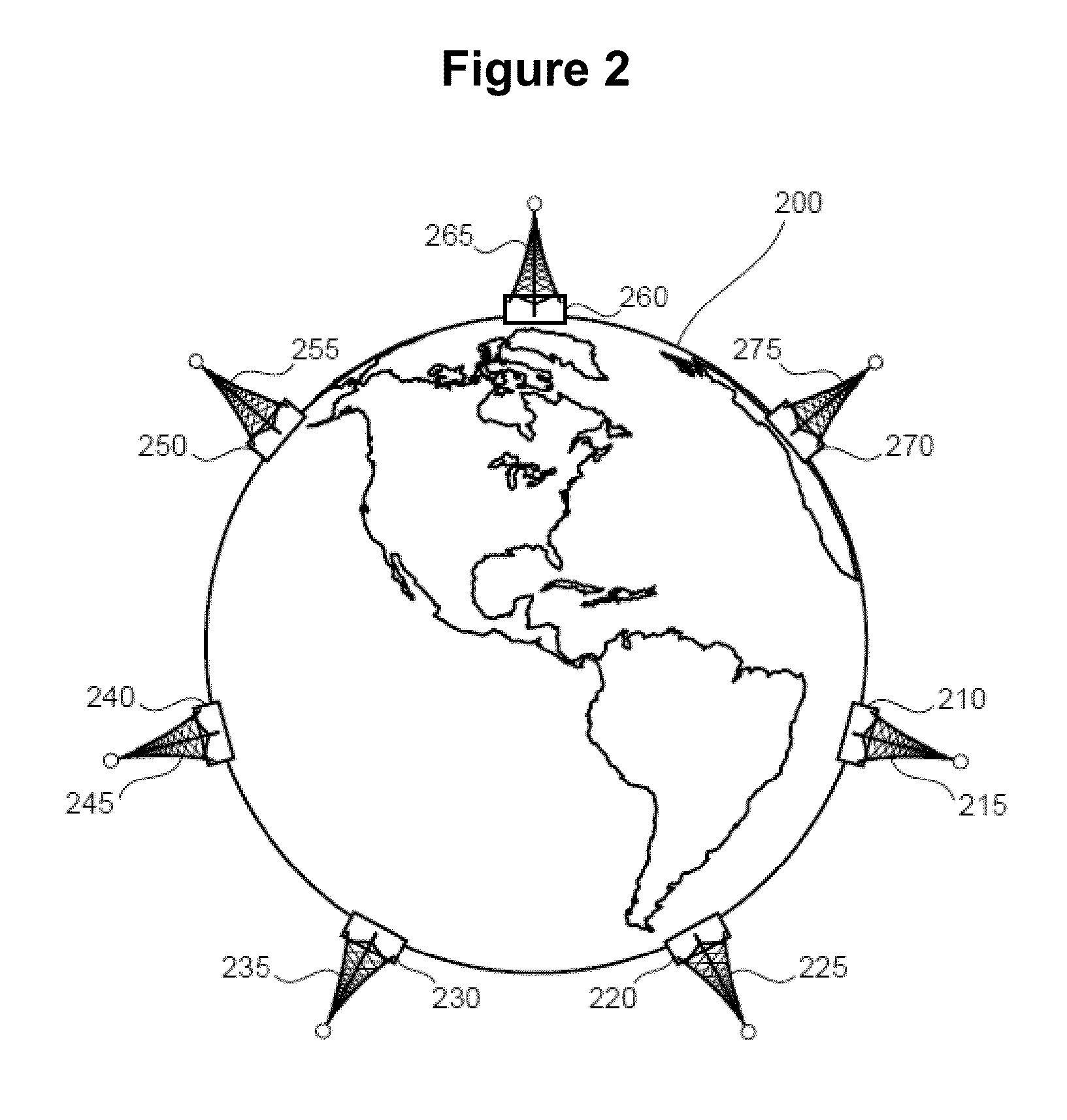Systems and Methods of Increasing Database Access Concurrency Using Granular Timestamps
a database and concurrency technology, applied in the field of database management systems, can solve the problems of limiting concurrent access to a single row, limiting the concurrent access of a single row, and being subject to garbage collection limits, etc., and achieve the effect of increasing parallelism and more granular data
- Summary
- Abstract
- Description
- Claims
- Application Information
AI Technical Summary
Benefits of technology
Problems solved by technology
Method used
Image
Examples
Embodiment Construction
[0041]Reference will now be made in detail to embodiments, examples of which are illustrated in the accompanying drawings.
[0042]Some of the disclosed embodiments of a database management system use a distributed time system when the database is distributed across multiple machines. FIGS. 1-8 illustrate one example of a distributed time system that can be used in conjunction with the database management system illustrated in FIGS. 9-16B. Some embodiments of the database management system illustrated in FIGS. 9-16B utilize alternative distributed time systems.
[0043]In this disclosure, systems and methods are provided for generating globally coherent timestamps. This technology may allow distributed systems to causally order transactions without incurring various types of communication delays inherent in explicit synchronization. By globally deploying a number of time masters that are based on various types of time references (e.g., Global Positioning Systems (GPS) and atomic clocks), ...
PUM
 Login to View More
Login to View More Abstract
Description
Claims
Application Information
 Login to View More
Login to View More - R&D
- Intellectual Property
- Life Sciences
- Materials
- Tech Scout
- Unparalleled Data Quality
- Higher Quality Content
- 60% Fewer Hallucinations
Browse by: Latest US Patents, China's latest patents, Technical Efficacy Thesaurus, Application Domain, Technology Topic, Popular Technical Reports.
© 2025 PatSnap. All rights reserved.Legal|Privacy policy|Modern Slavery Act Transparency Statement|Sitemap|About US| Contact US: help@patsnap.com



